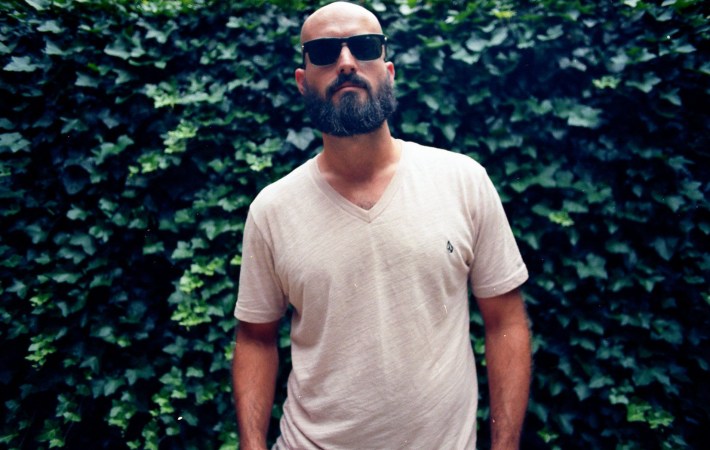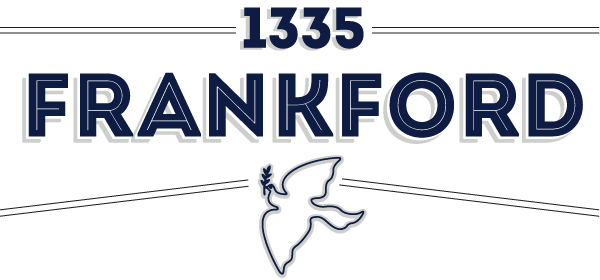Andrew Laputka is a documentary film director specializing in action sports and motor sports (check out some of his recent work). Through this medium, Andrew has developed a penchant for adventurous travel, provocative art, and the perfect cup of coffee.
La Colombe Interview with Andy Laputka
Theo: What is your La Colombe Story?
Andy: Before my film work started paying the bills, I worked as a painting contractor. We worked across the street from La Colombe so it’s been a part of my morning routine for about seven years. I would be painting and getting my coffee across the street, I didn’t realize I was turning into a coffee snob. I would go to other coffee places searching for something of a similar quality, but it’s hard to find. I found a couple places in LA but not Philly, maybe it’s simply a taste thing? I don’t work as a painter in Rittenhouse anymore, but when I’m at home working it’s still a part of my morning routine. I’ll drive down to center city even though it would be much easier to grab my coffee from somewhere else.
T: Are you originally from Philly?
A: No, not originally. I’m from Northeast, PA. I moved to Philladelphia in ’99 to enter the film/video program at Drexel University. It’s been about 14 years so at this point I consider myself a native.
T: What do you drink and why?
A: Well, I’ve never been a big fan of cream and sugar so it’s mostly been iced black coffee. I guess in this last year I’ve been turned on more by a little bit of the steamed milk, but not too much. I was stuck in a hotel in London during that hurricane last year. In the hotel, there was an espresso machine. I discovered I like espresso with a tiny bit of milk in it. I didn’t know this drink had a name until eight months ago. Since then, I’ve been getting double macchiatos or my usual iced coffee depending on the mood I’m in. My producer, Jacob Agajanian, and I travel all over the world together – anywhere from the slums of China to the dilapidated race-tracks in the Middle-of-Nowhere, USA. We have a running joke of “You think this place has fair-trade organic artisan coffee?”. A tad pompous, but it cracks me up every time. Unfortunately, in my travels, I’ve found very little that compares to La Colombe.

T: I recently saw the documentary PressPausePlay. Andrew Keen, one of the arguing voices of the film, said, “When you fall into the trap of confusing the artist and the audience, when you believe that the audience knows more than the artist – is more authoritative, is more creative, is more talented – then art ends. Then you have something else. You have a cacophony. You have simply an apology for radical democratization. And it’s wrong to confuse democratization in cultural or political terms with the creation of art, which is by definition, for better or worse, an elitist business.”
T: Where do you see art and creativity plateauing at? In film making, film vs. digital, it’s pretty radical what you are able to create. What do you feel are the pros and cons to what digital has done to the film industry, and is this a plateau for the artist?
A: I think we’re extremely close to the plateau. Pro or con – there’s an intense saturation of photography and video right now. It’s cool because it puts the means in the hands of people who didn’t have it before. I was doing in-camera editing sketch comedy on 8mm tapes when I was in eighth grade for history reports and just plain fun. If I had access to the technology I have right now, I can barely imagine what we’d have done with it. I feel like the con of the accessibility is that it is next to impossible to stand out among the digital artists in the world. You have to have a killer idea for photography and video these days. We were just having a conversation about Kubrick. A mind like Kubrick might be lost in the ocean of artists today.
T: The filter has become so clogged, how do you stand out when everything is so accessible, especially with all of this digital technology?
A: I work with a lot of photographers in the racing industry. I have some colleagues that shoot their digital photos very slow and methodically. On the other hand, my friend Larry Chen, who probably gets some of the best photographs in the industry, shoots photos that are well thought out, but at the same time, he’s shooting rapid fire, walking away with thousands of photos per race day. It’s a high-concept photograph, but he’s still shooting tons of photos searching for the perfect moment. A fashion photographer told me recently that some of his colleagues are taking red cameras and shooting them at the highest ISO possible and just taking stills from the video clip.
T: That’s bizarre. My question for you then is – is that really a picture?
A: It’s a still-frame.
T: What brings it together for you?
A: Well, where I’m at now is I don’t care what the medium is. You could use film, you could use disposable, you could use point and shoot, or a pen and paper. It’s all about the idea. Some of my greatest successes commercially on YouTube are made with a go-pro in my hand OR with three red shooters, full production crew and a $100,000 dollar budget. They will get the same results. This pyrotechnics piece I just directed cost probably ten times as much as most other projects I shoot, and right now it’s on track to be just about the same amount of success. The frustrating part is that I not only have to outdo my competition, but I also have to outdo myself. Luckily, I got in on the ground floor of the particular part of the motorsports industry I’m in. Drifting has only been a professional sport in the US since 2003. I’ve been in it from the beginning, and brought a keen photographic eye to the sport with my background in skateboard film-making as well as dramatic film-making. Thankfully, I’ve been able to stay creative and on the cutting edge enough to keep people’s attention.
Interview & Photographs by Theo Constantinou
If you would like to read more interviews by Theo click here.








